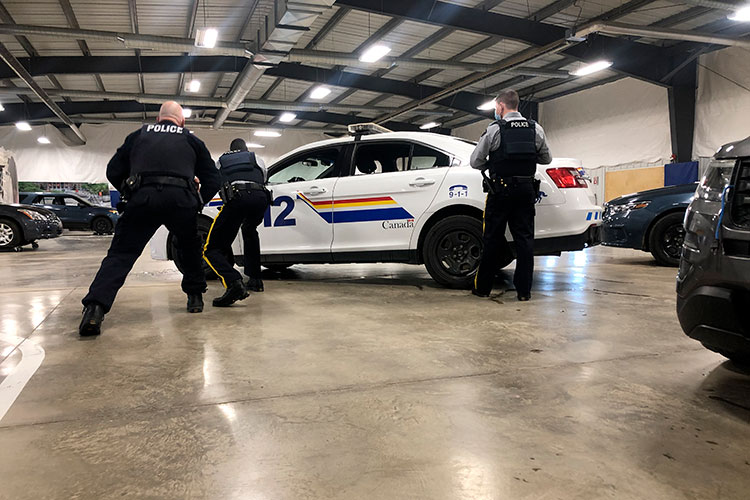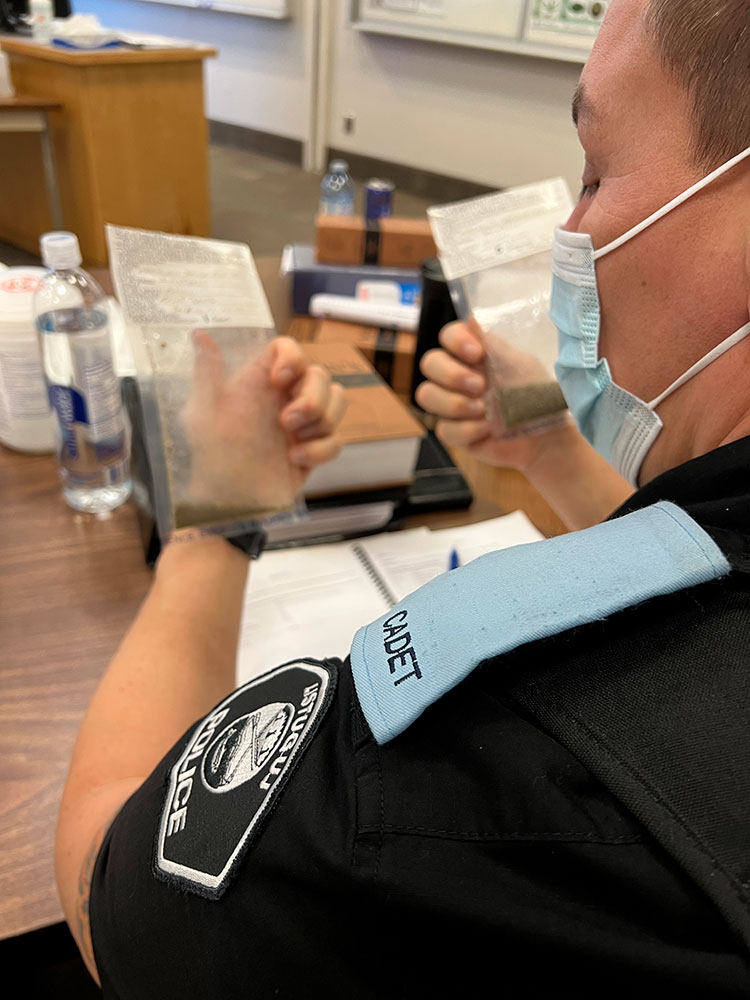Week 20: Serious business
Pistol benchmark
This week, it's time for another pistol benchmark test. This important evaluation shows cadets if they are on track to meet the score needed to achieve final pistol qualifications.
If cadets do not get the minimum score on this benchmark test, they receive one-on-one assistance from a firearms instructor to further develop their skills.
High-risk vehicle extraction techniques

Making traffic stops may seem routine, but they come with risks. Each traffic stop has different considerations that cadets must keep in mind.
This week, cadets learn how to protect themselves during a high-risk traffic stop. Cadets learn important techniques including vehicle positions and how to safely extract occupants.
The information we learned in this session definitely helped us work on communication and trust with each other.
Forensics in investigations
The RCMP has 3 forensic laboratories located in Surrey, Edmonton and Ottawa. These in-house labs provide forensic services in biology, firearms, toxicology and trace evidence. Lab analysts may be called upon at any time to attend the scene of an investigation and provide 24-hour services.
Cadets learn about the wide range of programs and services these labs provide. Part of the learning also includes the role members play in the field: collecting, packaging and submitting evidence for processing.
Controlled Drugs and Substances Act

Recognizing common controlled substances is an essential policing skill. In basic training, cadets learn what to look for and the requirements for searches and seizures of these substances.
This week cadets review violations under the Controlled Drugs and Substances Act. They also take part in scenarios to reinforce what they have learned.
Drug investigations are often complex. In operational policing, many investigations involve specialized units and community partnerships.
Single officer high-risk arrest
No two calls for service are the same. So far, cadets have been learning arrest techniques with a partner. This week, cadets learn how to make arrests when a partner may not be available to assist.
This training reinforces the importance of risk assessment and awareness of surroundings. Although not ideal, waiting for back-up may not always be an option. Cadets are reminded that in the absence of having another police officer with you, there are other resources and partners that can be called upon to assist in various capacities. A key element to remember is clear and consistent communication with those resources.
PARE #3
As the Cadet Training Program nears the finish line, cadets do the PARE a third time. This is the most intense fitness test for cadets and helps determine if a cadet is fit for the field.
There are a few changes to the PARE this round. Cadets must be able to complete the timed section in 4 minutes or less. Weight increases for the push–pull portion from 75 to 80 pounds.
- Date modified: